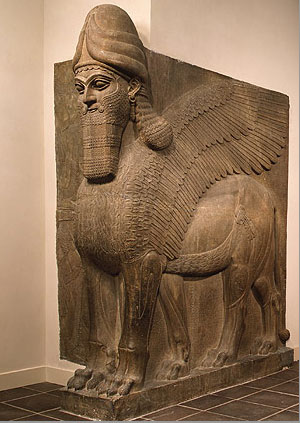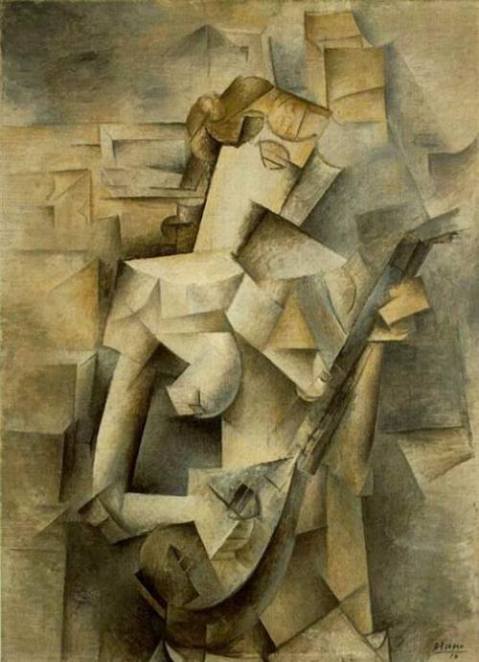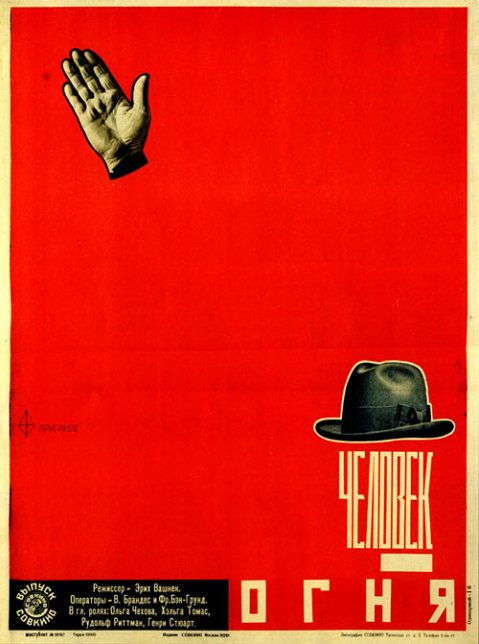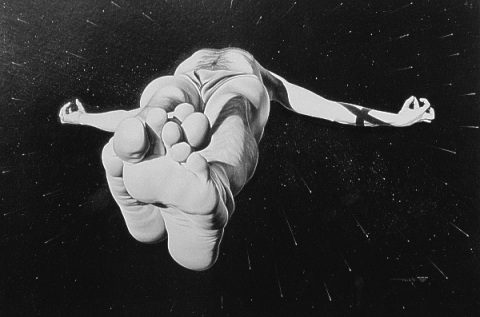Art and Human Consciousness: Transcending Postmodern Doubt
April 10, 2011 § 5 Comments
Art sings from the axis of truth to wake us up to who we are and where we are going. — Alex Grey, The Mission of Art
Since the first prelinguistic human put rudimentary paint to rough cave wall, the human race has sought to bring its inner visions into the world through form, sound and story.
These early depictions focus mostly on animals, or on human-animal interaction, perhaps having some kind of magical pre-hunt ceremonial meaning.
The next trend we see in ancient art (Egypt, Mesopotamia) is the portrayal of mythic power beings, often a merger of human-animal traits into superpowerful hybrids, perhaps an attempt of man to internalize the power he sees in animals.
As his consciousness evolves, man begins to wonder why.
To answer questions about origin and meaning, to instill a sense of control and some kind of system, the gods are born. Unless, of course, they really existed (ancient alien theory, anyone?). The most simple explanation of course is mythological — that man was symbolically growing wings, imagining himself greater than his past, stretching his imagination.
Next, the Ancient Greek interest in human form and aesthetic balance emerges.
In The Mission of Art, Alex Grey writes: “The new vision of Greco-Roman art began to shift away from the fusion of human-animal deities and focus more on ideal and naturalistic human forms. Naturalism corresponded more with the ascending world-view of rational investigation and description of nature (including human anatomy) which was the beginning of organized scientific medical inquiry.”
By the Renaissance, we see many self-portraits; in correspondence with humanity’s birthing self-awareness.
“As the ninteenth and twentieth century human psyche matured into the analytical rationalism of objective science,” Alex Grey notes, “the moderns turned their attention to analyzing the formal characteristics of painting and sculpture itself [. . . ] The search for unique and personal approaches led artists to increasingly clever explorations of abstract, surreal, and nonobjective [art.]”
Each “ism” signified original insights and inventions of the artists: impressionism (small but perceptible brushstrokes, realistic representation of light, usually indicating movement or passage of time, simplified form). . .
fauvism (French for “wild beasts”, strong color, simplified subject, mood over realistic representation) . . .
expressionism (the world represented in an utterly subjective manner, radical distortion of reality for emotional effect) . . .
. . . cubism (objects are broken up, analyzed, and re-assembled in an abstracted form—instead of depicting objects from one viewpoint, the artist depicts the subject from a multitude of viewpoints to represent the subject in a greater context). . .
. . . futurism (violent rejection of classism) . . .
. . . dadaism (ridicules the so-called meaninglessness of the modern world through the use of the absurd, precursor to surrealism) . . .
. . . constructivism (practical art, stripped of emotion, mechanized). . .
. . . surrealism (dreamlike juxtaposition, visual surprise) . . .
. . . abstract expressionism (anti-figurative aesthetic, emotionally intense, rebellion with nihilistic tinges). . .
. . . pop art (images from popular culture, ironic use of kitschy and/or banal found objects). . .
. . . minimalism (work stripped down to most fundamental features) . . .
. . . conceptualism (concept over aesthetic).
As you can see in this brief visual history of modern art, we’ve deconstructed ourselves to bits. Alex Grey details, “Today’s culture of high rationality has been dubbed post-modern, because we have deconstructed reason and language itself, finding that there are always multiple points of view on any subject.
“Any attempt to comprehend a ‘whole’ or ‘higher’ truth must take the cacophony of indivduals, each with his or her own opinion, his or her own “truth,” into account.
“Postmodern doubt has replaced the confident trajectory of invention and progress which characterized modernism.”
In light of our recent artistic past, it seems the current cultural situation calls for today’s artists to transcend the fractured vision of postmodernist deconstruction and find a new connectivity, a new vision, which does not so much rely on reaction to the past, as mining for deeper truths within the collective human psyche.
It is the first vision that counts. Artists have only to remain true to their dream and it will possess their work in such a manner that it will resemble the work of no other artist — for no two visions are alike, and those who reach the heights have all toiled up the steep mountains by a different route. To each has been revealed a different panorama. — Albert Pinkham Ryder





















As a consequence of our social nature, and inherent need to identify patterns, we as humans have the great ability to conceptualize the world around us. In order to communicate this, we must somehow symbolize abstract ideas that are in the form of neural connections in our brain. Thus we had the invention of language. However, art can express a much larger idea in less space. As our global culture evolves, so does our language, and our art to reflect this.
I’m excited and hopeful that we are collectively transcending the postmodern doubt and disconnection. We are all weaving the thread of connectivity and I’m eager to see how our new consciousness changes the artistic, political, and economic landscape!
Thanks for putting your thread in the mix, you have a beautiful mind and a lovely way with words.
Thank you for your thread!
Fantastic article! Brilliantly put together. Seems like it is true that conciousness is arising in many humans, but also it is true that the opposite is happening around the world. Art today, as always, mirrors those two panoramas.
Thank you!
Thanks so much for your comment! Agreed. Which is why it can be so easy to focus just on the negative aspects.
Here’s to being part of the evolution & improvement. 😉
On on!
TWC